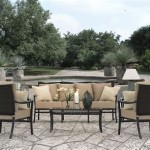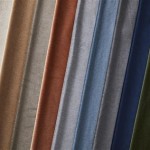Essential Aspects of Lumber for Outdoor Projects
Embarking on outdoor projects requires careful consideration of the materials used, particularly lumber. Exposure to harsh elements like rain, sunlight, and temperature fluctuations demands durable and weather-resistant lumber. Here are the key aspects to consider when selecting lumber for outdoor applications:
1. Wood Species
Certain wood species are inherently more suited for outdoor use due to their natural resistance to rot, decay, and insects. For example, cedar, redwood, and cypress exhibit exceptional durability and are commonly used for decks, siding, and outdoor furniture.
2. Pressure Treatment
Pressure-treated lumber undergoes a chemical treatment process that infuses it with preservatives to enhance its resistance to decay and pests. This treatment is recommended for projects like ground contact structures, retaining walls, and outdoor railings.
3. Moisture Resistance
Outdoor lumber should be able to withstand moisture without warping or rotting. Look for woods with a low moisture absorption rate, such as cedar or cypress. Additionally, proper sealing and finishing techniques can further protect the lumber from moisture damage.
4. Dimensional Stability
Outdoor lumber should retain its shape and size over time, despite varying temperature and humidity conditions. Stable woods like mahogany and teak are less prone to shrinkage, swelling, or warping.
5. Appearance and Grain Pattern
Beyond durability, consider the aesthetic appeal of the lumber. Different species of wood exhibit unique grain patterns and textures. For projects where visual impact is important, choose lumber with a grain pattern that complements the overall design.
6. Sustainability and Certification
For environmentally conscious projects, opt for lumber certified by organizations like the Forest Stewardship Council (FSC) or Sustainable Forestry Initiative (SFI). This ensures that the timber originates from responsibly managed forests.
7. Cost and Availability
Budget and availability are also important factors to consider. Some wood species are more expensive and may require special ordering. Determine the project requirements and budget before finalizing the lumber selection.
Conclusion
Selecting the right lumber for outdoor projects is essential for ensuring durability, performance, and aesthetics. By considering the factors outlined above, you can choose lumber that will withstand the rigors of the outdoors and enhance the longevity of your projects.

Best Wood For Outdoor Projects

Potential Woods For Use In Outdoor S Hardwood Distributors Association
What Lumber Should Be Used For Outdoor Projects Quora

What Is The Best Wood For Outdoor Use Our Guide
:max_bytes(150000):strip_icc()/101503798-3b3f57a1d1e7404a9aa8644615fdcb99.jpg?strip=all)
Choosing Wood For Outdoor Projects
What Lumber Should Be Used For Outdoor Projects Quora
:max_bytes(150000):strip_icc()/100447495-2f647ed3599d439c814191433c698291.jpg?strip=all)
9 Mighty Woods For Outdoor Projects
:max_bytes(150000):strip_icc()/100447492Pic2-68f0e5bd01554b48bc311e8ee4043e78.jpg?strip=all)
9 Mighty Woods For Outdoor Projects

How To Seal Wood For Outdoor Use Extreme

Choosing The Right Wood For Outdoor Projects Blog George Hill Timber








